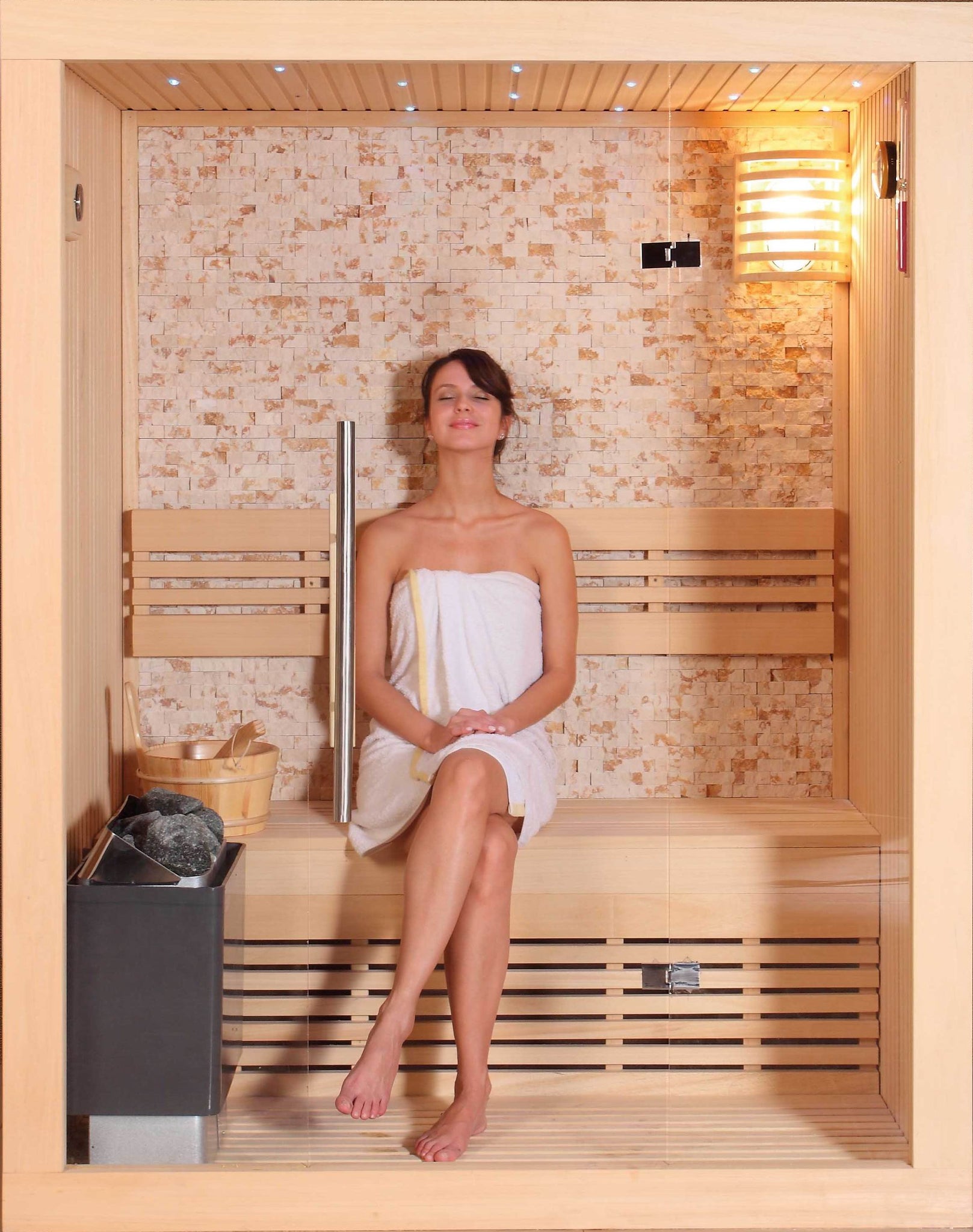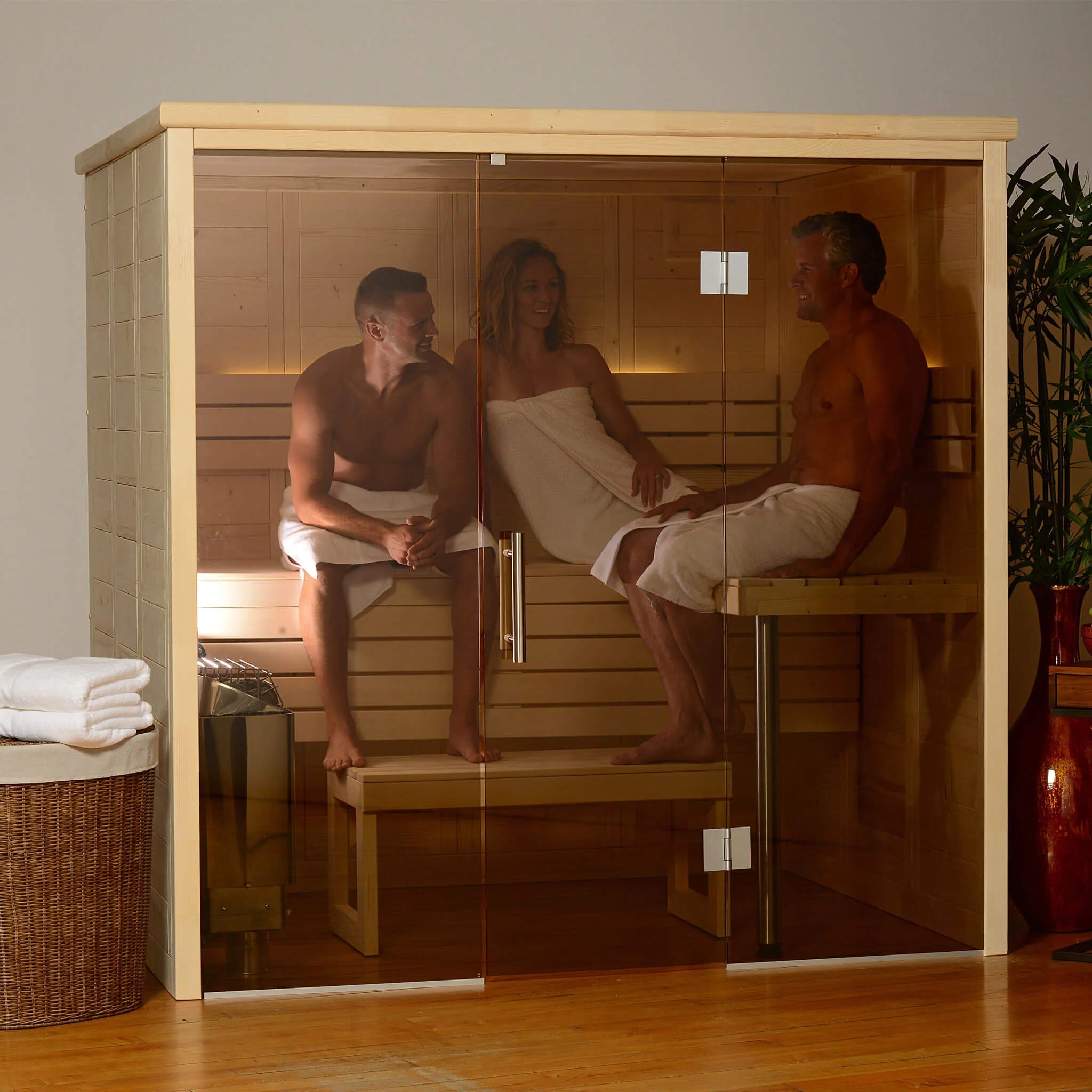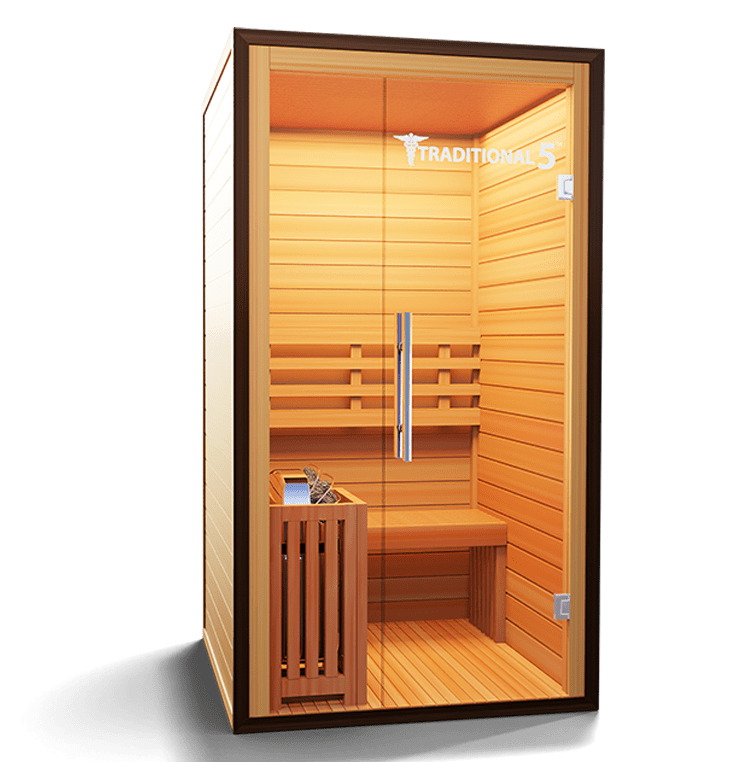The Definitive Guide for Traditional Sauna
The Definitive Guide for Traditional Sauna
Blog Article
The smart Trick of Traditional Sauna That Nobody is Discussing
Table of ContentsWhat Does Traditional Sauna Mean?Traditional Sauna Things To Know Before You BuyMore About Traditional SaunaThe Basic Principles Of Traditional Sauna Our Traditional Sauna PDFs
The majority of the weight shed in a sauna is water loss and is re-gained upon rehydrating. However, undoubtedly sauna can be an essential component of a healthy and balanced weight loss program. To take a look at the differences between conventional and IR saunas, I will certainly divide these into proven, theoretical, and made differences.Therefore, the hottest point in the saunawhich goes to the ceiling straight above the sauna heateris typically in between 185 and 190 F. Claims that a standard sauna goes beyond 200 F is simply not true and not suitable for electrical saunas sold in the US. The temperature for a far-infrared sauna is generally established between 120 and 140 F; nonetheless, unlike the conventional sauna, the objective in and IR space is not to attain a heat.
As a result of this, the temperature level distinction is virtually unimportant, because excessive sweating results in both sauna types, yet the method of warming the body is different. In an IR sauna the bather will certainly really feel warm and will sweat a lot, however at much lower temperatures (Traditional Sauna). Hence, if the goal is to spend longer time periods in the sauna, the IR sauna is an excellent choice
When a standard sauna has been effectively heated, the sauna walls are warm, the air temperature has accomplished set temperature level and the rocks are incredibly heated. As a fascinating side note, the warmed wall surfaces and the rocks are discharging far-infrared heat, integrated with the heated air, to create an "wrapping up warm".
The Basic Principles Of Traditional Sauna

When the high temperature level is achieved, the components cycle on and off to maintain the high temperature. A lot of standard sauna individuals delight in pouring water over the rocks to create steam to raise sauna moisture levels. The advantages of pouring water over the rocks consist of: making the area a lot more comfortable, moistening the nasal flows, and permitting the use of aromatherapy by mixing crucial oils with the water.

When the energy gets in the body, it creates the body temperature level to increase and eventually causes sweating. In an infrared sauna it is essential for the emitters/heaters to stay on almost frequently. Because there is no mass of rocks to retain heat, the sauna will certainly cool if the emitters shut off.
As stated over, the sauna bather in an infrared room wishes to position himself before operating emitters to get maximum gain from the heat. The heating time for both rooms can be really various, relying on just how the rooms are used. For a standard sauna, a bather ought to enable 30-40 mins for the room to attain a preferred temperature level and to appropriately pre-heat the rocks.
See This Report about Traditional Sauna
A well constructed sauna will typically achieve a temperature level of 150-160 F in regarding 30-40 mins. For hotter temperatures, the area might require to warmth for a longer period.

Typical saunas tend to be larger (hence use more electricity) than infrared saunas, although traditional saunas are definitely available in one and two person sizes. For a two-person conventional sauna, 5x6 or 5x7 dimension is most popular. The leading bench can easily seat 2 or three people and is also enough time to exist down during the sauna session.
The Definitive Guide for Traditional Sauna
The typical price per kWH of electrical power in the U.S. is around $0.11, so a 4.5 kW heating system will cost around $.50 to run for one hour, if the heating unit runs constantly for one hour. Typically a sauna heating unit will certainly compete 75% of the first hour and 50% of succeeding hours on because the aspects cycle once the established see this website temperature level is accomplished.

There is a rarely talked about difference in the social experience in between the two rooms. While our culture has shed several of the social advantage of the traditional sauna experience, it can be extremely socially satisfying additional resources (Traditional Sauna). From household time in the sauna, to heart-felt conversations with better halves, to sauna partiesthe standard sauna experience can bring about intimate socializing
Things about Traditional Sauna
The majority of greater end infrared spaces include tinted light treatment, audio systems and full-glass fronts.
Report this page